|
Bree and I headed out to do a little work together for the first time a week or so ago, in that gorgeous sun. I was SO proud of her! At 4 months old she's really enjoying getting out and seeing new things. We were only out for a couple of hours, but she did fantastic, napping in the carrier while I pruned fruit trees, and hanging out in her play thingy while I cleaned up some old irrigation lines in the hoop house. It's a baby step but it felt momentous, merging motherhood with farming. Maybe we can pull this off!!
1 Comment
We made a baby! Bree joined this world back on October 19th and she is the best thing to hit our lives since... well, ever. She is a spunky, chunky, bright-eyed little bundle of baby, and Gabe and I are both totally smitten with her. I’m a pretty solid workaholic – a lot of farmers are, I think – and the question I always used to ask mothers was, “How soon could you get back to work after having your baby?” I always assumed that the baby stage of parenting would be a slow and monotonous sort of hell, just months of tears and diapers and agonizing boredom. Being productive has always been a big source of satisfaction in my life, and I was seriously concerned that the change of pace into motherhood would break me. Not so! At least not yet. Turns out that raising a little human is quite fulfilling, and though it is SUCH a different pace than pre-baby life, parenthood so far has been super satisfying. I guess I wasn’t giving biology enough credit - the minute I became a mother every bit of my being just wanted to take care of this little critter. And even though the first couple of months with Bree felt really challenging and sometimes cooped up, I never wished for anything different. Farm… what farm? Well, I did have to coordinate getting summer business wrapped up in late October and November after Bree was born, but luckily I had Lauren and Brian at the farm, and Karen and Darlene at the High Altitude Harvest CSA. They were able to run harvests and distribution, so all I had to do was line up orders with accounts and the CSA crop list each week and get that to them. I made it out to the farm once a week or so to check in and help direct a few wrap up tasks, but honestly that was about all I could manage. I had a hard recovery from the birth process, so I wasn’t able to do anything physical at all (even walking much) for the first 6 weeks. For any prospective farmer mothers out there, I feel like it’s worth sharing that birthing a baby took a way bigger toll on my body than I had expected. After 3 days of labor I ended up with a C-section because Bree was posterior and wasn’t flipping. I never in a million years imagined that I would have a C-section (we had planned a home birth), and the recovery was a total bitch. Getting in and out of bed was SO painful, sneezing was agonizing, and taking care of the baby took more energy than I had to give, even with Gabe and family doing a ton. It sucked, and I wish I hadn’t needed a C-section, but I did, and so I’m grateful that I had the help when I needed it. And even though I didn’t think I would ever feel normal again, it got better. I started to feel slightly more mobile at 6-8 weeks post-partum, and at about 10 weeks (aka an eternity) I was able to start going for longer walks and doing some exercises. Now I’m 3 months out and I can definitely see the light - I can do crunches, I carry Bree for hours, and I don’t have to worry when I lift things. But even so, I think it’s going to take me a most of the winter to get my strength back enough to farm. It’s so easy to think that if you’re fit and healthy that the birth process will go swimmingly, and it does for so many women, but for me labor was a big lesson in Things Don’t Always Go How You Plan Them. I expect that lesson will be a recurring theme with parenthood!
Now that kiddo is 3 months old it feels like we’re all getting into the swing of things, and I am starting to look forward to the next farming season. I’m able to do some business work now – financials and crop planning – during nap time. And I’ll walk out to the farm with her every so often to check on things, imagining that even though she is sleeping she’ll absorb some of the good farm vibes. Once the farm season starts I’m hoping to be able to bring her along for much of it, though we won’t know exactly how that will pan out until the time comes! I’ll keep you posted. The other day we packed up a 30 pound box of beets and I realized that I am carrying around the equivalent of that box every day on my belly. No wonder nap time feels so damned good! I’m well into my 8th month of farming pregnant, and pretty much so far so good. Sometimes it feels fairly easy, and sometimes it is wicked hard, it just depends on the day. I am still working daily and I haven’t once cried in front of the crew, which (I joke) was one of my main goals for this season.  A cartoony belly silhouette on the hoop house A cartoony belly silhouette on the hoop house Like I said in a previous post about farming pregnant, I had so many questions about what it would be like to work through a pregnancy that I feel compelled to share my experience here, just in case it can help out some other farm gals who are thinking about getting knocked up. So, here’s the blow by blow… Right around 26 weeks – just before hitting the third trimester – I noticed a big shift in my energy and ability. My main clue about this transition was that every Saturday afternoon I would collapse into a tired, blubbering mess of pregnant exhaustion. (Gabe has definitely seen me cry this summer…) The 55-60 hour work week had to go, for the sake of our household’s sanity. I started taking some longer naps, and I dropped my evening farm shift entirely. I also got an additional helper on board for the CSA distribution (thank you Darlene!), which cut back a lot on how much lifting, carrying and on-my-feet time I have to do on Wednesdays. So I’m now down to about 45 hours a week of farm/CSA work, plus a few hours of office work each week. Which is still plenty! But it feels manageable, especially since I get an awesome nap time nearly every day. The work I am doing at the farm has shifted too. I move slower, and for the most part I’m just working in the washing and packing shed, where I can stay upright. I do a bit of harvesting still, but squatting and bending is difficult (and involves more grunting than is dignified), so I’m pretty limited with big harvesting jobs as well as weeding, transplanting and other low-down or heavy tasks. I hired some more crew to make up for this change (go Teagen and Brad!), so I spend a lot of time directing all of them, bless their hearts. I should be taking more breaks to sit down and rest during work shifts, but it is really hard to sit idle while the crew is working. Even though they are completely supportive, I feel like a total slacker if one of them sees me taking it too easy, and I know I can still get some things done, even if they are little tasks. I’m only moderately productive for afternoon office work after I get off the farm though, so I guess that’s the tradeoff.
I’m due Oct 14th and we have 2 milestones right around the first of October – our last full summer CSA distribution for High Altitude Harvest was Sept 28th, and our big Pumpkin Patch event on the farm is October 1st. After those we’ll be in the home stretch, both for the pregnancy and the farm. The bittersweet thing about the end of this season is that our production really tanked out on the farm… a few failed crops, some bad aphid problems and a period this summer when I got behind on planting made for very limited harvests in late August and September. I had to cut off some of our accounts really early this year, which is a bummer financially. The silver lining is that I had already lined up extra help for the end of the season to make up for my limitations, so we’re getting a jump on projects like mulching out new perennial zones, organizing stuff and building deer fence to prep for farm expansion. Those will be good tasks to have knocked off the list when I have the baby in tow next year. And I can't say that I'm sad to possibily be wraping up a little early this year, with the kiddo coming soon. It hasn’t been easy, but running a farm while pregnant is doable. It would be nice to have more mental space to prepare for the baby’s arrival, but it’s also good to not have too much time to obsess over the craziness of impending motherhood. And a huge benefit to farming pregnant is that I do feel very strong and healthy, MUCH more so than if I’d had a desk job. Being so active while growing a baby is hard work, but farmers aren’t strangers to labors of love, eh? We're going to add a new farmer to the crew in 2016! She will be even shorter than five feet tall, and her primary job will be adding happiness and cuddles to the farm. That's right, farmer Elizabeth (me) and my husband Gabe are having a kiddo! For years leading up to this decision I've agonized about whether or not I could pull off farming and being a mother. We wanted a family, but I also didn't want to give up all of the work we've done building the farm. I wanted to know that I could grow a baby and still kick some ass in the fields. I found a couple of blogs by prego gals who worked on farms (which were helpful, check them out here and here), but I still wanted input from women who actually ran their own businesses. I asked every mother farmer I ran into what her experience was, and usually got an answer something like, "Well, I switched to doing most of the office work while my husband took over the field work." Good for them! But that wasn't the answer I was looking for. Gabe would understandably go insane trying to work his own job and run the farm. And since farmer Cody is still mostly away at grad school this year, I'm the head honcho farmer.
We finally decided to take the plunge and go for it, and I'm happy to report that I've made it into my 6th month of pregnancy in tact and with the farm pretty much on track, which I count as a win. I've figured out a few strategies for farming pregnant that have worked for me, so I thought I'd share them here just in case there are other women farmers out there considering motherhood. This is the kind of logistical stuff that I would have liked to come across. Timing the Pregnancy I always knew that any baby of ours would have to have good timing in order to fit into the farm season. I figured a due date sometime November-January would be ideal, but we jumped the gun a little and ended up with a baby coming in mid-October. In hindsight though, I'm really happy that I'm not going through first trimester exhaustion during the peak planting season of late-April through June. I have never before felt that kind of tiredness! As it worked out, I've been feeling pretty strong and relatively energetic for the launch of the harvest season. We'll see how I feel when I'm huge in September though! We had good luck timing our pregnancy because I started tracking my cycle using the Fertility Awareness Method. It's pretty easy to do, fun to know more about how your body works, and makes it possible to know almost exactly what days of the month to "try" based on your own body's signs. The Fertility Friday podcast is a great place to learn more, as is the book Taking Charge of Your Fertility. (And no, it's not the same thing as the bogus Rhythm Method.) All of this gave us a much better shot at succeeding in getting pregnant during the months we wanted to. Get Past Start Up Though we are still definitely in our business start up phase, I'm so grateful that we're done with our 2 year push of building the farm infrastructure. There's no way that I could have done 13+ hour days while being pregnant, I would have been destroyed. Though there's still a lot of work to do now, it's more manageable than building sheds and fences and all of the other pieces that had to fall into place. We also now have many awesome tools that we hadn't yet invested in a couple of years ago (BCS walking tractor, jang seeder, etc), which make a lot of jobs on the farm easier. Helpers The other thing I'm really grateful for is that we're actually projecting to make a profit this year, which means I can hire extra help throughout the season as we need it. Of course that means I'll be taking home less of a paycheck, but it's a much better situation than it would have been the last couple of years, when we didn't get paid much of anything because we were investing all of our earnings back into the farm. Even early on in my pregnancy, there were tasks that felt like they were just too much for my changing body, like wheelbarrowing and spreading compost. Or if I could do them, I would be totally exhausted the next day. I'm going to continue to lean heavily on our crew this year for these types of tasks. Zack, Lauren and Brian, thank you for doing the heavy lifting, you are the best! And Gabe has been taking some evening and weekend shifts doing harder stuff like mowing, tilling and weed eating, which is huge! Modify Tasks and Make Life Easier My expectations for how much I can get done have definitely been adjusted this year. I work shorter shifts, morning and evening, and stay out of the heat of the day. I eat lots of snacks. I make tasks easier or lighter when I can, and save the heaviest ones for the crew. If I don't take a nap in the afternoon I'm totally useless for the rest of the day, so my strategy is to take a nap right after I come home for lunch, and then get a couple hours of office work in before going back out to the field for the evening. I'm also trying to prep a big dinner dish over the weekend that we can eat off of for the week, so we're not trying to make food after I get home at 8:30pm. So all that said, I do still feel strong and able, just in a different way than most years. I've still been tilling and laying irrigation and transplanting and harvesting and everything else that goes on out there. It'll be interesting to see how those last few months pan out, but so far so good. And I hope that by sharing a little of my journey I can help other women figure out how motherhood can fit into their own farming lifestyle. If you want to see your pregnant Five Foot Farmer in action come on down to our Saturday morning Farm Stand this summer, every week from 9:00am to 12:30pm at the farm! by Farmer Elizabeth My sister is good at thinking up marketing angles and she said to me recently, “Farming is the new sexy!” And I got to thinking that yeah, farming is damn sexy. Muscle, sweat and dirt… it doesn’t get much more alluring. But sometimes when you’re juggling a busy farm schedule it can be hard to keep it sexy enough out there, so I developed this list of tips to help our fellow farmers keep it hot. 1. Tan LinesMake sure to wear the same length t-shirt sleeve day after day in order to get a really defined mid-bicep tan line. Also, wear shirts that are a little too short, so when you bend over to harvest your lower back is exposed. With this technique you’ll get a deep golden low-back tan that will really “pop” in contrast with your ghost white ass. 2. Crack AppealWhen you bend over to do anything – weed, harvest, pick up a tool – this is a great opportunity to show off your farmer crack. Wear pants that are a size too big so that you get a good display. It helps to forget your belt at home. 3. FragranceIt gets hot out there, and nothing says “I’ve been working in the sun for 10 hours” like a little earthy body odor. Make sure to use natural deodorants that let your scent shine through. 4. Derma careSkin is a universally sexy body organ, and there are many opportunities to maximize your skin’s appeal in the field. First, wear sunscreen, but only in patches rubbed on hastily at the beginning of the farm shift. This modeled burn look is all the rage right now. Secondly, hot afternoon winds are a great exfoliant. Expose as much skin as possible in order to maximize the wind’s drying effects. Finally, a thin layer of soil all over your face does wonders for your pores. 5. Muscle ToneHaving muscle definition all over your body is so… boring! Farmers need to show off the unique muscle tone that comes from field work. The lower back muscles developed from hours of hoeing are the sexy-equivalent of an abdominal six-pack! Also make sure to casually show off the sleek strength of your thumb and index finger developed from endless kale bunching. Take every opportunity to point out that you do have muscle definition, just not in the normal places. So for reals now, all of these things occur out in the field, and the truth is that the work often doesn’t leave you feeling particularly good lookin’. Yes it’s hot and dirty, but not the way people usually mean when they put those two words together.
When you have a farm to run there’s just not time to sit around looking pretty. The sexy-farm-girl archetype is so completely ridiculous - a woman in cutoff jeans lounging in a hay pile and definitely not pulling her weight around the farm. I think not. The upswing? I think our culture actually is progressing to the point where farming could be the new sexy, because the new sexy could be about becoming capable and strong and tackling life head on. It could be about working hard to accomplish something that seems impossible at the onset. And the new sexy could definitely be about loving your body because of what it can do, not how it measures up to a airbrushed idea of beauty. My suggestion for women everywhere: less fashion magazines, more compost pile turning! Fellow farmers, how do you keep it hot and bothered in the field? Share your tips in the comment section below. We've been really stoked on our cover crop this spring. After last year's less than impressive performance, we're luxuriating in the thick rye and vetch that has sprung up this winter, despite the drought. We think our soil fertility has increased because of the work we did last year applying compost and compost tea, establishing summer cover crops, and adding organic amendments. We still have to get a soil test done this spring, which will be super interesting. Last summer's cover crop did really well too. We sowed it at a couple different points through the summer, and use wobbler sprinklers to keep it growing. Our east field had a big mix of rye, turnips, field peas, radishes and sunflowers. The back half of the west field had a mix of buckwheat, turnips and daikon radish (which were delicious!). Now that we have a bomber cover crop established we just need to work on making our mowing process a little less ridiculous... Update: We're not ridiculous anymore! Thanks to support from our awesome friends, family and total strangers we purchased a flail mower for our walking tractor last year, and it absolutely destroys cover crop. Such a relief!
by Elizabeth The great thing about running a farm is that it really satisfies those of us with an energetic (read: totally obsessive), gotta-stay-busy personality type. The To-Do List is always abundantly full of tasks - especially this spring as we were transforming a plot of pasture into our beautiful new Five Foot Farm site. We would finish one project and immediately start thinking of the next 5 jobs. It's was awesome... and we're so glad it's done. Now that it's fall and our harvest schedule has slowed we thought it would be fun to put our feet up and look over our Done List - all of the huge things that we accomplished this spring! As first generation farmers we didn't know jack about how to do most of these things when we started last year. We are super grateful for our encouraging mentors who offered excellent advice and help every step of the way. build a hoop houseFrom scratch! No kits. It turned out great. This is where we grew our starts and trialed hoop house tomatoes and peppers in the ground. Keep the Deer Out7.5 foot deer fence built without pressure treated wood. The deer do laps around it. Get ElectricityFrom the barn, under the driveway, across the farm and to the shed.
Then Till, Till, TillHours. And hours. Breaking down the pasture. We learned that good music was a necessity. Feed the soil!Compost piles, organic amendments, cover crops and our tricked out new compost tea brewer. And that was just the beginning! Stay tuned for detailed accounts of our hoop house construction and other projects on the farm.
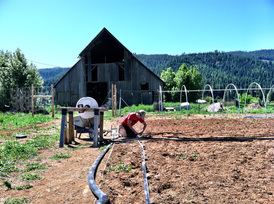 by Cody There’s a recent op-ed in the NY Times by Bren Smith that’s creating more buzz than a hive of honeybees. Smith argues that while terms like locavore and CSA have now made it into the everyday vernacular of mainstream America, the stars of the current local food movement are the chefs and authors – not the farmers. Despite the success of farmers’ markets and CSA’s throughout the country, 91% of farm household still rely on off-farm income to survive and most farmers are losing money. He argues that farmers need to band together to shape the face of the local food movement and demand reforms before they are left in the dust. I agree with the basic tenants of his argument but, like Jenna Woginrich, what struck me most about his article was the title, “Don’t Let your Children Grow Up to be Farmers.” It makes me think of the Willie Nelson song my mom used to sing to me: Mamas don’t let your babies grow up to be farmers. They’re never at home, They’re always on the farm, Even when it doesn’t pay the bills. Or something like that... As a beginning farmer in the Sierra Nevada mountains, I get where Smith is coming from. I juggle 4 part-time jobs in addition to the farm. I have student loans and wonder about my ability to support a family. I don’t own the land that I work and don’t know if or when I’ll have to pack up and leave all the infrastructure, soil fertility and perennial plants I’ve toiled away for. Despite all my business planning and financial projections, I wonder about the long-term financial viability of the farm and am constantly searching for creative solutions to stay afloat. My grandmother would roll over in her grave if she knew that I became a farmer instead of a doctor or lawyer like she wanted. Mamas don’t let your babies grow up to be farmers. But wait... The average age of farmers in the U.S. is 56. If we don’t let our babies grow up to be farmers, how will our babies and our babies’ babies have the nutritious food they need to live healthy, productive lives? If we keep pushing our babies toward office jobs that encourage unhealthy lifestyles, how can we possibly create a healthy society where they can thrive? If we keep financially supporting farming practices that don’t steward the land, how will we ensure that the food we are feeding our babies isn’t compromising the very ability of their generation to even grow food? Smith's article calls on farmers to lead the charge for a more sustainable food system that will be viable in the long term. While I agree that small-farmers need to be intimately involved in designing a system that will work for them not against them, I disagree that the rest of society - those benefiting most from the hard work of the farmers - should be allowed or encouraged to step aside in the fight for a fair food system. Consumers need to be educated on the realities facing farmers and on what needs to change in order to make small-scale farming viable. They need to learn about the benefits of local food produced in a manner that supports healthy land and healthy communities. They need to understand the value of real food and start refusing to compromise their health for convenience. They need to start demanding that the food system support their right to healthy, safe food. Mamas, you don’t necessarily have to encourage your babies to be farmers but please encourage them to support farmers and healthy food systems. Mamas please:
The answer is not to discourage young people from becoming farmers. We need their passion and creativity now more than ever. Mamas please do encourage your babies (and your friends and family) to become farmers, or at least to support healthy food systems.  My 5 foot great-grandma Dorothy in her 90's My 5 foot great-grandma Dorothy in her 90's by Elizabeth When I was 14 my great-grandmother Dorothy interviewed me for a gardening job. Standing in front of her flower beds that day I thought the work looked hot and hard, and I didn’t understand what she meant when she said the beds needed to be cultivated. I wavered, not sure if I wanted the job, and she replied, “That’s okay, I should probably find a boy to do it anyway.” I don't know if she meant to, but she’d played me like a fiddle. I stiffened and stood up straighter, saying stubbornly, “No! I’ll do it.” She nodded, maybe even smiled. I tended her flower gardens for the next three years until I left for college. She taught me about the satisfaction of hard work and digging in the soil, and to never leave the rock rake lying tines-up ("Are you trying to kill me?" she'd say with a mock frown.) She started me down the path to becoming a farmer. As a young person I thought somehow I could save the world. Climate change, population growth, animal rights… it was enough to make my young heart ache for solutions. I wanted to make change, make it better, but I didn't know how to make a big enough difference.  The obsession begins! The obsession begins! I kept building my plant- and food-based resume, working at a nursery, two organic farms, a grocery store, a food bank and a school garden. Slowly, through this work and with the help of many teachers, I began to see sustainable farming as my way to make positive change. I came to believe that the goal wasn't to make a big difference, but to make a difference where I could in a community that I’d come to love. And I chose farming not just because it was good for people and the planet, but because I couldn't get enough of it. Good food became my cause, and farming became my obsession. I would fall to sleep at night dreaming of the lush winter squash vines on my future farmland. I found plots of land to grow on, and I planned and planted and tended them religiously. I learned to sell my produce. I made mistakes, grew some beautiful crops, and I worked towards the life on the land that I dreamed of. Farming fulfilled me on a level that no other work ever had. I wanted more of it. Now, launching onto this long-awaited 4 acre farm site, it feels like an amazing fruition of so many years of dreaming and working. Tackling a big piece of land is exciting, terrifying, joyful, exhausting, and totally satisfying, all at once. Maybe most of all, making progress on this farm site represents the ability to overcome challenges, both internal and external. Gaining ground on big goals is a pretty awesome feeling.  Groundbreaking day in 2013 Groundbreaking day in 2013 Teaming up with Cody came at the perfect point in my farming journey. Having a partner to troubleshoot with through the planning process has been invaluable, and I’ve also remembered how much more fun it is to work with friends. We have synergistic levels of determination, work ethic, geekiness, and love for the land. We both like spreadsheets and soil biology. We both have big dreams for our small farm. Today, I know what the word cultivates means and I think my great-grandmother Dorothy would be proud of our farm. She grew beauty for beauty’s sake, in beds of hydrangeas and peonies. I grow beauty too, in rows of carrots and beets and cabbage. And even though a core goal of our farm is to make the world a little bit better place, I know that it's the day to day challenge and satisfaction of working on the land that keeps me coming back for more. Thanks for the life lessons and calluses Grandma Dorothy! by Cody I didn't grow up on a farm. Or even in farm country. I grew up in a ski town with schizophrenic feelings about its ranching roots, and I did ballet. I remember my mom growing a few cold season crops when I was young. Kale. Maybe some cilantro. Rhubarb. But gave them up after not too long when she decided rafting and skiing were more fun. I stuck with ballet. As I approached graduation I came to realize that my chances at becoming a professional ballerina were slim to none, especially at 5'2". I decided then to forgo a life as an anorexic waitress (a.k.a. semi-professional dancer) and pursue my other dreams - becoming a National Geographic photographer and an international development superstar. (Nothing but realistic, healthy, achievable goals for me!) I went to college, studied International Development and moved to Nicaragua. While living in Nicaragua off-and-on over a handful of years, I watched as development and 'Big Ag' started to move into rural communities and the subsistence farming lifestyle began to fade. Families who had worked the land for generations began moving away from the farm. People forgot that tomatoes could be grown without chemicals. Youth, who as children had referred to September as 'the time of the ayote (squash)', stopped helping their parents in the fields and began preparing themselves for office jobs in the city. Villages that had once been almost completely self sufficient became bedroom communities; parasitic pueblos dependent on the cities for survival. All the traditional signs of 'development' were drawing people away from the land and their heritage. I also witnessed the damage that even the most well-intended, outsiders-with-influence can do when they think they know better than the communities they serve. And the rural communities left reeling in their wake. A water table that was critically lowered because of a failed running-water project when the community really wanted a school. City style subdivisions plopped into rural communities without regard to water, waste or electricity needs. I met people working against this tide though, and learned that it is the communities who look within themselves for answers and support who best survive the impacts of fickle outside forces. Communities who are clear about their values and about the importance of preserving local resiliency. People who aren't afraid of hard work but are afraid of losing their identities. It was at this point that I became most interested in the role that vibrant local food systems can play in preserving community health and identities. But... instead of picking up a hoe and cultivating a piece of land at that point, I moved to the Caribbean and became a professional snorkeler. And eventually moved away from land all together, hopping aboard a sailboat and embarking on an unplanned circumnavigation. Maybe it's because I get incredibly sea sick, or maybe it has something to do with the physiological effects of being surrounded by thousands of miles of water, but it was on our second ocean crossing that I began to dream about farming again. I would dream of digging in the dirt and map out crop rotations in my mind as I steered the boat through starless nights. I informed my partner that if we ever got our own sailboat (we were hitch hiking then), it needed to have two heads (bathrooms) so I could convert one into a greenhouse.
We didn't buy our own sailboat though and eventually returned to the US, broke and homeless in the middle of 'The Great Recession'. We had loved sailing and traveling but we came back to land because we longed for a home and community again. The long process of community and job hunting led us, completely unexpectedly, to Quincy and we both instantly knew that we had found home. Not finding much work in international development or sailing in the rural Sierra Nevada mountains, I started building another career. It was at this point that I happened to meet Elizabeth and my wild dreams of farming began to take root. I now find myself pouring over chicken catalogs, geeking out on soil microbes, and coveting tractors. I know that I'm not going to save the world or become and international super star, but I feel lucky that I get to spend my days digging in the dirt and growing healthy food for my community. |
AuthorsCody and Elizabeth's ruminations from the field... Archives
February 2017
Categories
All
|
| We're putting the small back in farming! |
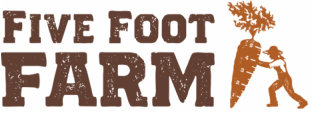






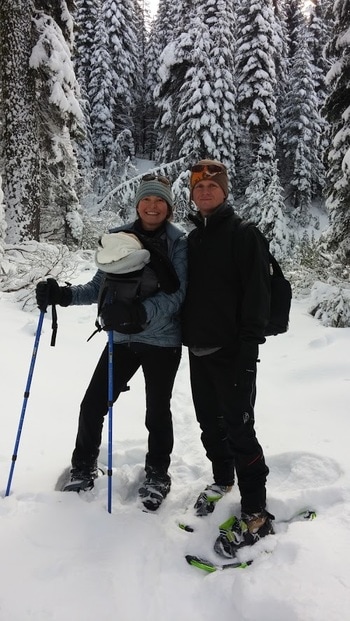






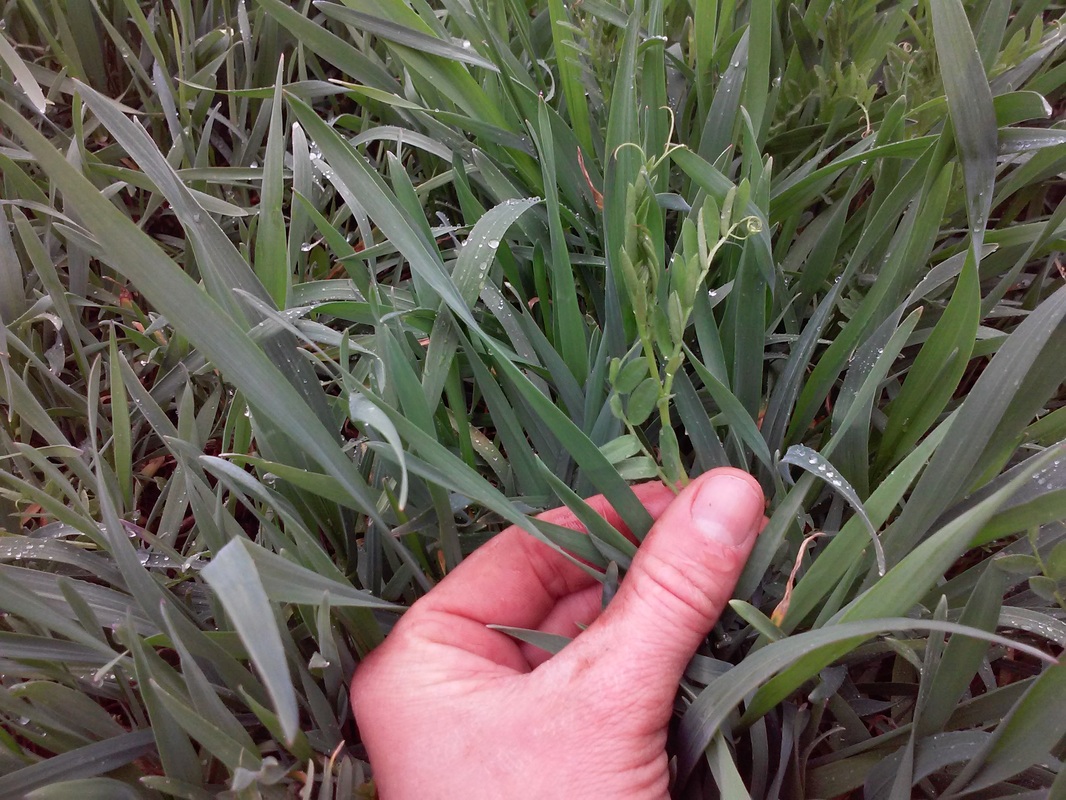

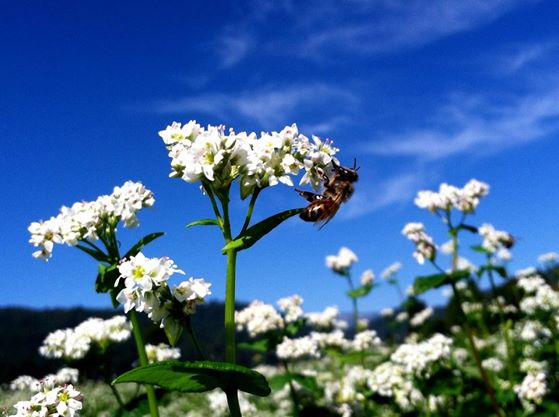
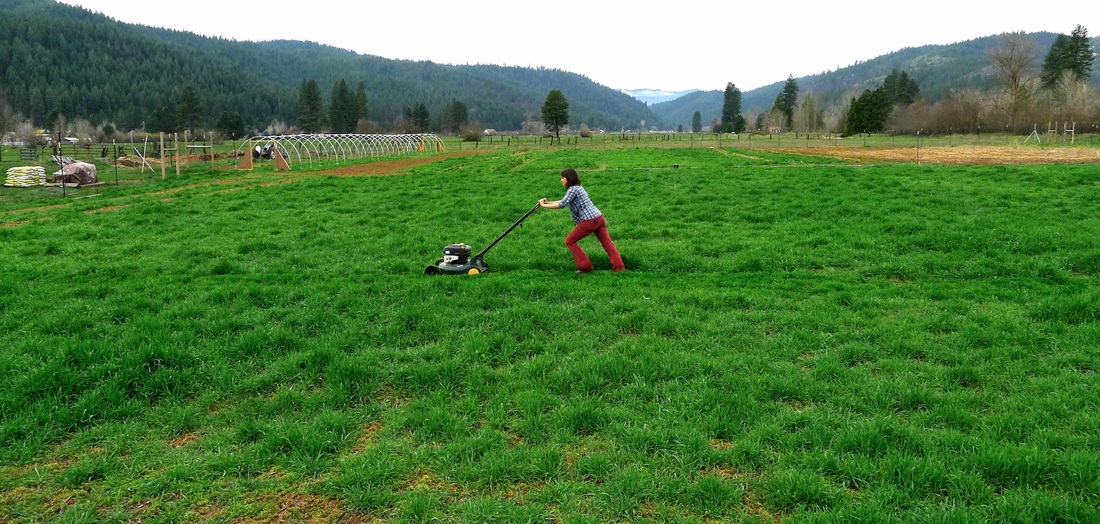











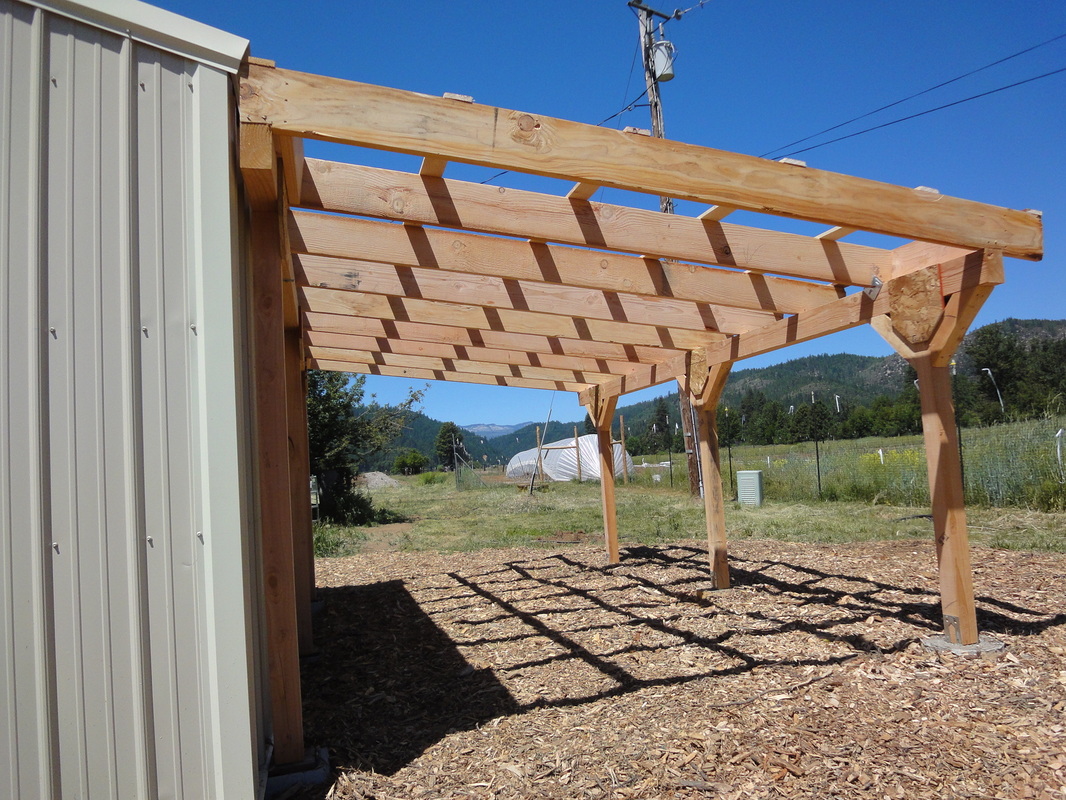


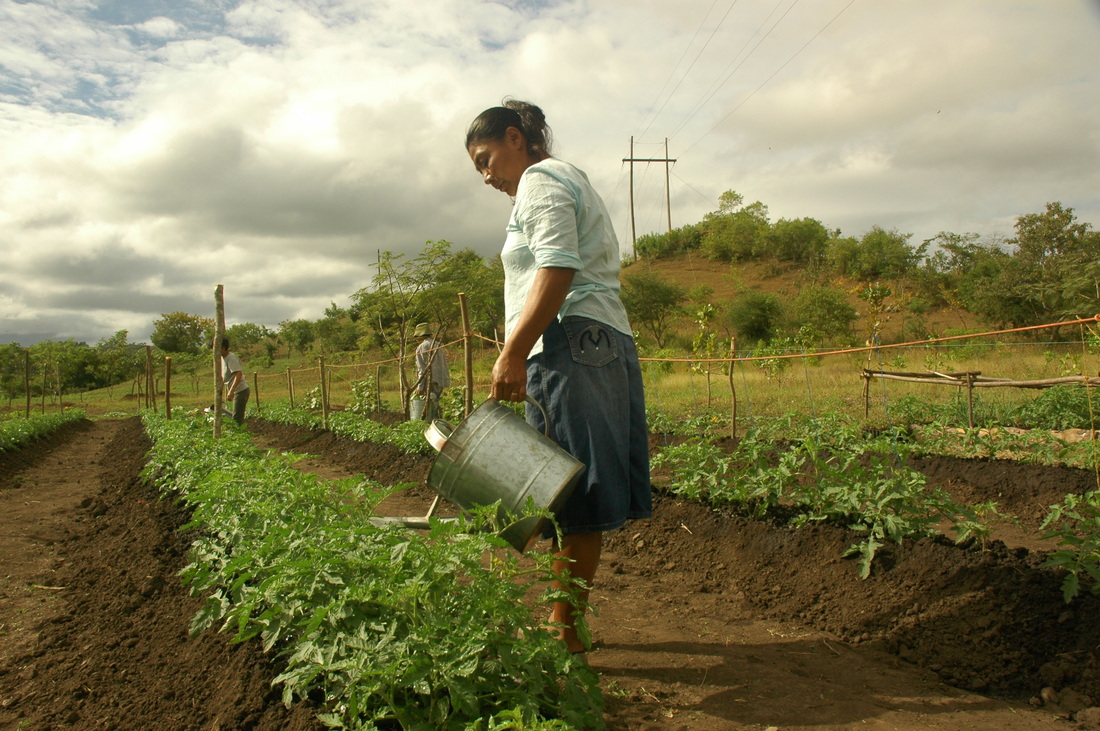

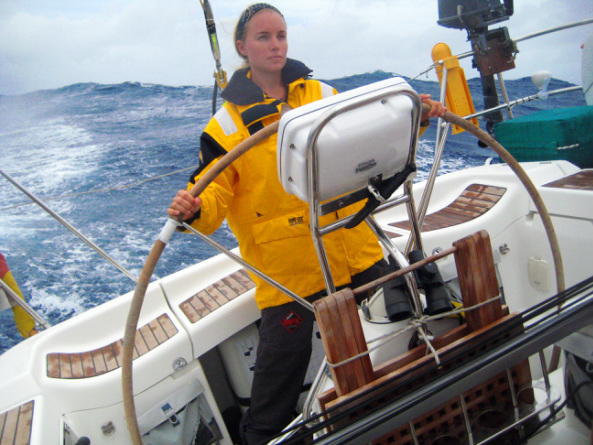

 RSS Feed
RSS Feed
